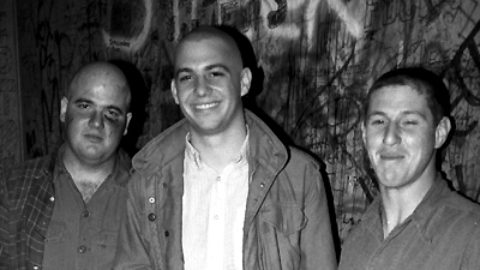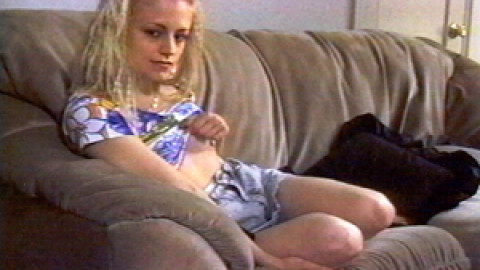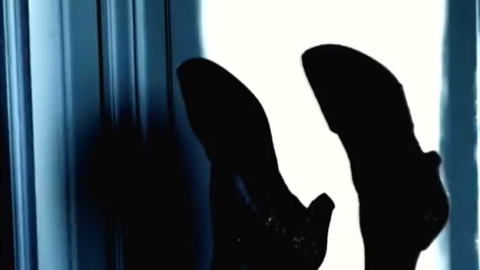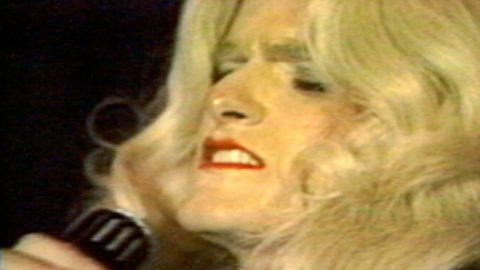In Memoriam: Vito Acconci
Vito Acconci’s 1974 video work Open Book confronts the viewer with the artist’s open mouth in extreme close-up. It’s flooded with saliva, the lips looming large, the teeth spaced far from one another—not a flattering shot, even by the standards of self-consciously off-putting Nixon-era performance art. For roughly 10 minutes, Acconci repeats the following: “I’ll accept you, I won’t shut down, I won’t shut you out… I’m open to you, I’m open to everything… This is not a trap, we can go inside, yes, come inside.” He emphasizes the word “open,” struggling to keep his mouth just that: open. In this frenzied, transgressive work, Acconci’s unnatural actions give vent to a common psychological need for acceptance, while at the same time pointing to an individual’s unknowability, as if we could really climb into someone’s mouth to find out who they are.
Open Book is also a work of performance and video rooted in the specifically cinematic device of the photographic close-up. It transforms that proximal viewpoint from a privileged position into an unfortunate one. In the pursuit of an uncomfortable intimacy, Acconci used the language of cinema in a uniquely antagonistic way which echoed and extended the goal of his performances, in which his body was a site of artistic expression put into subversive contexts. Duration and framing were utilized with great skill to achieve Acconci’s viscerally unsettling ends. In Theme Song (1971) Acconci addresses the viewer directly, lying comfortably on the floor, his face close to the camera as if you were lying right next to him listening to his attempts at seduction. The artist’s sexualizing of the camera’s gaze breaks through the customary limits of distanciation and allows Acconci to speak directly to the viewer, working on him or her with unnerving persistence. Acconci turns the performance into an aggressive assault on the viewer who is subject to his advances. Video, with its inherited filmic language, was allowing Acconci to achieve a new kind of radical visual poetry which brought him closer to his viewers and enabled new feelings to be felt (maybe not all good ones) and gaps to be closed.
As confrontational and nettlesome as the work of Acconci—who died last month at age 77—could be, there is a sort of devious justice in it. This justice comes from the fact that despite the seemingly brutish antagonism of his work, and its deep criticism of contemporary American culture, he doesn’t ask anyone else to do his bidding or endure his scrutiny (with the exception of Pryings and a few other works). It is Acconci who is scrutinized in his probing art; as the subject in his performances and particularly his videos, he turns the camera’s unforgiving eye on his own body and actions. The artist beat “the system” to the punch: he exploited himself before anyone else could, using his ordinary-looking physique to create unsavory works of art in the form of his boundary-pushing videos. Through this self-imposed exploitation Acconci tells the whole story of the dark side of popular entertainment in all its dehumanizing/objectifying glory, where there are those who do the shooting and those who get shot, as he transformed himself from flesh and blood into moving-image material.
Like Chris Burden, Paul McCarthy, and other performance artists of the 1960s and 70s, Acconci recorded his acts both on film and with early portable video technology. When we look at these documents today, their high-contrast, degraded images transform what is largely conceptual and performative into a graphic experience. In Burden’s work, such as the 1971 video Shoot (shot on 16mm and converted to video), the result is an austere document where the video’s degradation of reality creates a sense of mythic distance, like an early photograph. Acconci’s work however highlights the grime of video, with its ghostly haze image which serves as less of a window and more of a dirty screen peering into a cluttered apartment, and accentuates it with his often uncomfortable actions, or his inertia. There is neither austerity (or at least not an austerity which could be mistaken for elegance) nor mythic distance in Acconci’s work. The metallic contrast of the image in works like Claim Excerpts from 1971, which documents a performance in which Acconci attempts to hypnotize himself into a state where he can violently defend the space he is occupying, and Applications (1970), which features a woman kissing Acconci’s naked torso, leaving it covered in lipstick marks, only enhances the intimate and conspiratorial nature of what is being captured. These videos transcend document and documentary, and instead, through their framing, achieve an aesthetic identity of their own as art objects.
In Acconci’s videos, what is framed, how it is framed, and how long it remains on screen (often as dictated by the action) are all of paramount importance. Time was of special interest to Acconci however in his work. As he told Jeff Weinstein at the Museum of Modern Art Archives Reading Room in 2012, “[S]pace is important. But I think time is just as important if not more important. But again, coming from writing, you automatically assume time. You know? It takes time to go from the top of a page to the bottom. Whereas, you know, you can look at a painting for an instant, you know? You see it all at once. You can’t see a page all at once. You certainly can’t see a book all at once.” With video, even more than performance, Acconci now had the ability to control the experience of rhythm and time in his work.
Born in the Bronx in 1940, Acconci had intentions of being a poet, earning an MFA in literature and poetry from the University of Iowa but finding himself too restless for poetry. Unlike poet-filmmakers in the mold of Brakhage or Cocteau, Acconci found a cadence all his own, utilizing the poetics of film in his video work—a terse, minimalist-realist, idiom which suited and enhanced his performances through the use of the close up and the long take. Acconci’s videos transform the average into art through formally economical means: taking small actions (keeping his mouth open, pulling on his skin and belly fat, masturbating); using the most readily available of materials, his own body; and magnifying all of this into powerful declarations of freedom and radical humanity.
There is power in the “specific,” whether it’s Acconci’s exposed stomach or his open mouth. “What I did think of is that, how do I do something specific?” Acconci told Weinstein at the MoMA talk. “I bring up the word ‘specific’ a lot because I think only when there’s specificity can somebody else, can the receiver have their own ideas. I think more and more, to me, the freedom of a person is amazingly important.” Acconci finds inspiration and potential for deeper meaning (as well as his materials) in his own mouth, his stomach, his penis, his voice, his own face and body; video and film were uniquely suited to capturing this specificity in close-up. The artist’s curmudgeonly visage in his videos however, ultimately communicates something very different from works which stare in wide-eyed wonder at everyday life. Acconci’s videos, rather than saying “Ah, isn’t life beautiful,” instead seem to say “You think your shit don’t stink?”
Acconci’s video work culminated in the ambitious, long-form 1977 piece The Red Tapes. It melds the artist’s performance acumen with wide open landscapes, re-photographed still images, close-ups, spoken audio, and music, creating a cinematic vision which was more complex and discursive than his earlier single shot works. The two-and-a-half-hour work contains a dizzying array of approaches to image-based art and communication. Shots are often separated by a black screen, wiping the slate of the viewer’s mind clean and allowing to take in yet another image, sound, action or combination of all three. Acconci appears in The Red Tapes in much the same way he does in his earlier videos, framing himself in a similarly offhanded manner, straight on, staring into the lens, clothed in black, performing an action, filled with human vulnerability and yet dehumanized. It is as if this is the only place where the Acconci of his videos can exist. Acconci the man, however, appears in Yvonne Rainer’s 1980 film Journeys to Berlin/1971 alongside Amy Taubin; Acconci plays “A Man” and Taubin “A Woman.” In Rainer’s film it’s as if Acconci the man has escaped the monochromatic void of his videos, leaving Acconci the object/subject of The Red Tapes, Open Book, and Claim Excerpts behind.
Acconci stands as a luminary in the world of video, performance, and conceptual art, his influence also evident in the aesthetics of punk and its subsequent mutations. His videos when viewed now may have the aesthetic quality of evidence in their gray, humming anti-aesthetic. This non-look however, is the look. In Acconci’s work these degraded, mundane images have a fugitive quality that seems to evade the dulling effects of history and good taste to this day.
Chris Shields is a New York–based filmmaker and writer. He is a frequent contributor to Art & Antiques magazine and Screen Slate, and recently completed his latest documentary, Valton Tyler: Flesh is Fiction. His next film, the horror comedy Killer Makeover, will be out later this year.







